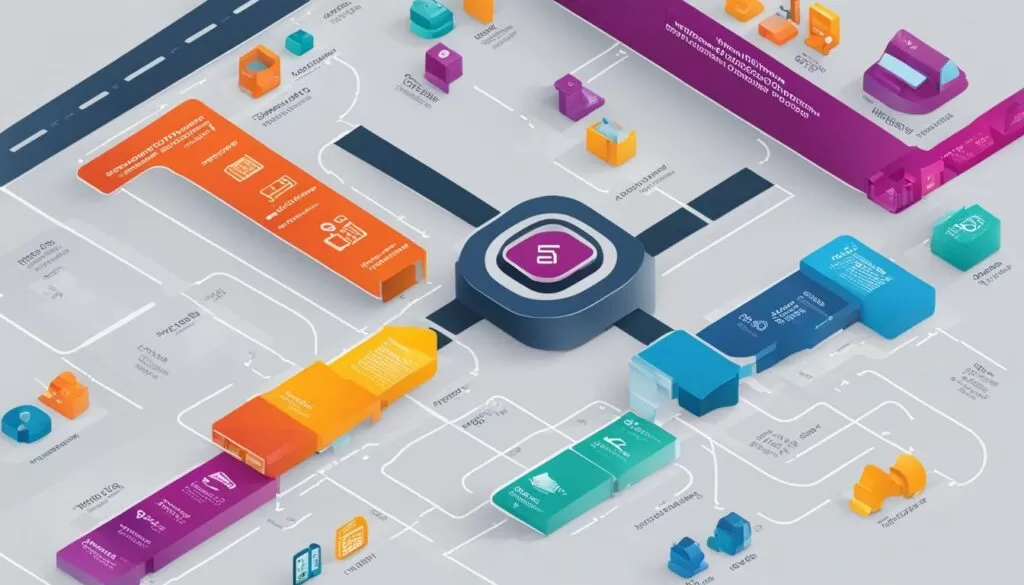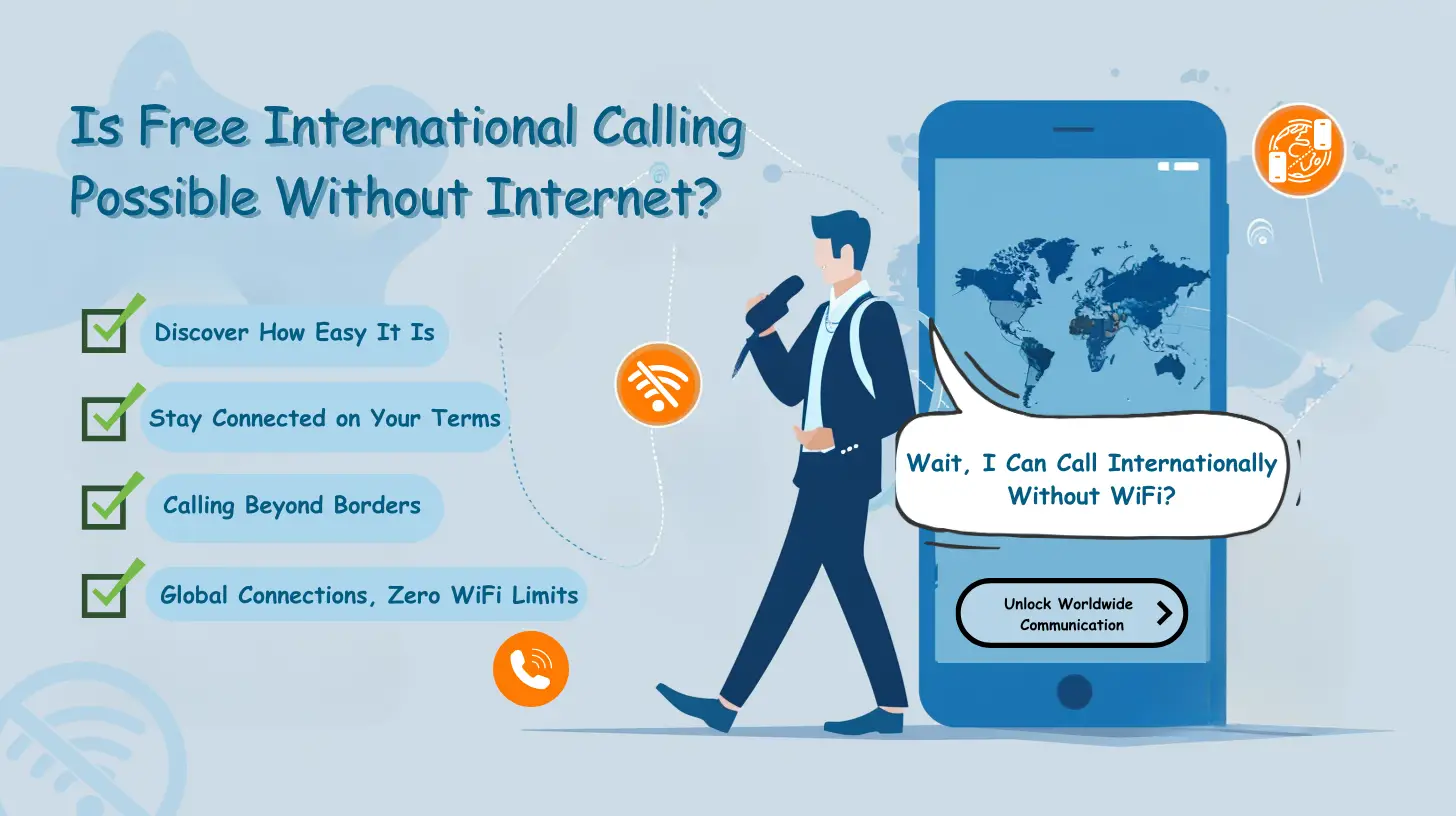How many channels are in a SIP trunk?
SIP Trunking is a modern communication solution that allows businesses to make and receive telephone calls using an internet connection instead of traditional phone lines. It enables businesses to create virtual lines or trunks that can transmit multiple signals simultaneously, providing numerous benefits such as cost savings, scalability, flexibility, and improved reliability. By supporting various communication features and integration with other business systems, SIP Trunking offers a comprehensive solution for effective and efficient communication.
At My Country Mobile, we understand the importance of SIP Trunking in today’s business landscape. Our expertise in this area makes us your go-to guide for understanding how many channels are available in a SIP trunk and maximizing the potential of this communication technology.
Key Takeaways:
- SIP trunking allows businesses to make and receive telephone calls using an internet connection.
- It offers benefits such as cost savings, scalability, flexibility, and improved reliability.
- SIP Trunking supports various communication features and integration with other business systems.
- My Country Mobile is your trusted guide for understanding SIP trunking and its channel capacity.
- Stay tuned to learn more about SIP trunking and how it can enhance your business communication.
What is SIP trunking?
SIP trunking is a technology that enables businesses to make and receive phone calls using an internet connection instead of relying on traditional phone lines. It creates virtual lines, or trunks, that can transmit multiple signals at once, offering several benefits for modern businesses.
With SIP trunking, businesses can experience cost savings by eliminating the need for multiple phone lines and reducing long-distance charges. It also provides scalability, allowing businesses to easily add or remove channels based on their communication needs. This flexibility is essential for companies with fluctuating call volumes, ensuring they only pay for the channels they require.
In addition to cost savings and scalability, SIP trunking offers improved reliability compared to traditional phone lines. By utilizing the internet connection, businesses can avoid common issues like line noise, dropped calls, and limited call capacity. This technology supports various communication features, such as voice, video, and instant messaging, helping businesses enhance their internal and external communication.
To further streamline operations, SIP Trunking can be integrated with other business systems, such as customer relationship management (CRM) platforms or call center software. This integration enables seamless data exchange and provides a unified communication experience for employees and customers alike.
How Does SIP Trunking Work?
SIP trunking works by using an IP-enabled PBX system to manage internal phone networks and the SIP protocol to initiate and terminate calls over an internet connection. An IP-enabled PBX system, also known as a VoIP phone system, allows businesses to make and receive telephone calls using the internet instead of traditional phone lines. It acts as the central hub for managing internal phone networks and routing calls to the appropriate destinations.
The SIP protocol, or Session Initiation Protocol, is responsible for the signaling and control of calls on a SIP trunk. It enables the initiation and termination of calls, as well as the negotiation of call features and capabilities. SIP trunking allows businesses to transmit voice, video, and other multimedia communications over an internet connection, offering greater flexibility and scalability compared to traditional phone systems.
When a call is made using SIP trunking, the voice data is divided into packets and sent over the internet to the recipient. The quality of voice calls is maintained through technologies like Quality of Service (QoS) protocols, which prioritize voice traffic and ensure a smooth and uninterrupted communication experience. With a reliable internet connection and proper QoS measures in place, the call quality on SIP connectivity can be as good or even better than traditional phone systems.
| SIP Trunking Process |
|---|
| 1. IP-enabled PBX system manages internal phone networks |
| 2. SIP protocol initiates and terminates calls |
| 3. Voice data is divided into packets and sent over the internet |
| 4. Quality of Service (QoS) protocols prioritize voice traffic |

By leveraging an IP-enabled PBX system and the SIP protocol, businesses can enjoy the benefits of SIP trunking, such as cost savings, scalability, flexibility, and improved reliability. It allows for seamless communication between remote offices and teams, integrates with other business systems, and provides access to advanced communication features like video conferencing and instant messaging. SIP trunking is a modern solution that simplifies communication and enhances productivity in the digital age.
Understanding How Many Channels in a SIP Trunk and Pricing
The number of channels in a SIP trunk is not fixed and can vary based on the number of concurrent calls, and they are billed by SIP trunk providers. This flexibility allows businesses to expand or contract the number of channels as needed, depending on their call volume and requirements. Pricing for SIP trunk channels is typically based on a per-channel basis, with the cost per channel determined by the SIP trunk provider. It’s essential to consider various factors when choosing a SIP trunking provider, such as security, real-time analytics, disaster recovery, interoperability, international coverage, and service level agreements.
When selecting a SIP trunking provider, it is crucial to find a reliable and reputable company that can offer the necessary quality service and customer support. Security measures should be a priority to protect your business communication. Real-time analytics can provide valuable insights into your call traffic and help you optimize your communication strategy. Disaster recovery capabilities ensure that your business remains operational even in unexpected situations. Interoperability with other systems and international coverage can expand your communication capabilities and reach.
To help businesses budget for their communication needs, many SIP trunking providers offer unlimited calling plans with a monthly flat rate. This pricing model simplifies cost management and allows for better planning and allocation of resources. Additional services, such as Direct Inward Dialing (DID), may require a separate channel and may incur a small fee. It’s important to calculate the cost and benefits of adding more channels and communicate these clearly to customers, ensuring transparency and avoiding unexpected charges.
| Factors to Consider when Choosing a SIP Trunking Provider |
|---|
| Security measures |
| Real-time analytics |
| Disaster recovery capabilities |
| Interoperability with other systems |
| International coverage |
| Service-level agreements |
By carefully evaluating these factors and considering your business’s communication needs, you can choose the most suitable SIP trunking provider that aligns with your requirements and ensures a reliable and scalable communication solution.

There may be a perception that call quality over the internet is inferior, but with a reliable internet connection and quality of service measures, the call quality on SIP connectivity can be as good or even better than traditional phone systems. SIP Trunking, which allows businesses to make and receive telephone calls using an internet connection, offers a reliable and efficient system for communication.
SIP Trunking supports various communication features and can be integrated with other business systems, providing businesses with flexibility and scalability. By utilizing an IP-enabled PBX system, which manages internal phone networks, and the SIP protocol to initiate and terminate calls, businesses can maintain the quality of voice calls through technologies like Quality of Service (QoS) protocols.
Transitioning to SIP connectivity may seem daunting, but it is often simpler and more efficient to manage than traditional phone systems. When the correct security measures are in place, SIP connectivity can be as secure as traditional phone lines. It is important for businesses to choose a reliable and reputable SIP connectivity provider that offers quality service and customer support.
Ensuring Call Quality on SIP Connectivity
In order to ensure a high level of call quality on SIP connectivity, businesses should focus on having a reliable internet connection. This means investing in a robust internet service that can handle the bandwidth requirements of voice calls.
Quality of service measures should also be implemented to prioritize voice traffic and minimize latency and packet loss. This can be achieved through network configuration and the use of QoS protocols to allocate sufficient resources for voice calls.
| Quality of Service Measures for SIP Connectivity |
|---|
| Invest in a reliable internet service |
| Configure network settings to prioritize voice traffic |
| Implement QoS protocols to allocate sufficient resources |
By following these measures, businesses can experience call quality on SIP connectivity that is as good or even better than traditional phone systems. Transitioning to SIP connectivity offers numerous benefits, including cost savings, scalability, flexibility, and improved reliability, making it an attractive solution for modern businesses.

When choosing a SIP trunking provider, it is important to select a reliable and reputable provider that offers quality service, customer support, and the necessary security measures. With the increasing popularity of SIP trunking, there are numerous options available in the market, and making the right choice can significantly impact your business communication.
To ensure that you are choosing a reliable SIP connectivity provider, consider the following factors:
- Quality Service: Look for a provider that offers high-quality service with excellent call clarity and reliability. The provider should have a robust network infrastructure to handle your communication needs efficiently.
- Customer Support: A reputable provider will offer reliable customer support to assist you with any issues or queries that may arise. Look for 24/7 support availability and prompt response times.
- Security Measures: The provider should have stringent security measures in place to protect your communication data. This includes encryption protocols, firewalls, and regular system updates to safeguard against potential threats.
Additionally, consider the provider’s track record and reputation in the industry. Look for reviews and testimonials from other businesses that have used their services. It is also important to assess the provider’s scalability options to ensure that they can accommodate your business growth and future communication needs.
By carefully evaluating these factors and selecting a reliable SIP trunking provider, you can ensure seamless and efficient business communication, enabling your organization to reap the benefits of SIP trunking.

Understanding SIP Channels and Lines
SIP channels and lines are essentially the same thing, with channels being like lanes on a highway, each capable of supporting one call at a time. When it comes to SIP trunking, businesses need to determine the number of channels needed to handle their call volume and accommodate future growth. This helps ensure efficient communication and budgeting.
Think of it this way: if you have a single lane on a highway, only one vehicle can pass through at a time. Similarly, with SIP channels, each channel can support one call at a time. So, if you have a higher call volume, you’ll need more channels to handle multiple simultaneous calls.
For budgeting purposes, it’s important to consider the pricing structure of SIP trunking providers. Many providers offer unlimited calling plans with a monthly flat rate, which means you can have multiple channels without worrying about individual call costs. However, it’s essential to take into account additional services like Direct Inward Dialing (DID), which may require a separate channel and incur a small fee.
Table: SIP Channels and Lines Overview
| Concept | Explanation |
|---|---|
| SIP Channels | Virtual lines or trunks that transmit multiple signals at once. |
| Number of Channels | Determined by call volume and future growth predictions. |
| Support per Channel | Can handle one call at a time. |
| Budgeting | Consider pricing structures like unlimited calling plans and additional service costs. |
| Direct Inward Dialing (DID) | May require a separate channel and involve a small fee. |
Having the right number of channels is crucial for ensuring smooth communication within each department and accommodating call volume. It’s also important to have an appropriate system in place to support new technology. A trunk call system, for example, allows for improved productivity and effective data collection.
By understanding the role of SIP channels and lines, businesses can better allocate resources, optimize communication, and ensure that their SIP trunking solution meets their specific needs.

Calculating SIP trunk channel allocation requires accurately predicting growth and needs to ensure there are enough channels available for each department. This process involves considering factors such as call volume and future growth to determine the number of channels needed.
SIP trunking providers often offer unlimited calling plans with a monthly flat rate, which simplifies budgeting. By opting for a fixed monthly rate, businesses can better predict and manage their communication expenses.
Additionally, when calculating SIP trunk channel allocation, it is crucial to take into account any additional services required, such as Direct Inward Dialing (DID). Depending on the needs of the business, these services may require a separate channel and incur a small fee.
| Factors to Consider for SIP Trunk Channel Allocation |
|---|
| Call volume |
| Future growth |
| The number of additional services required |
When considering the cost and benefits of adding more channels, it is crucial to communicate clearly with customers. This ensures transparency and helps them understand the value they are receiving in terms of increased communication capacity and enhanced productivity.
By accurately calculating SIP trunk channel allocation, businesses can ensure sufficient channels are available for each department, supporting their communication needs. This proactive approach allows for seamless and uninterrupted communication, enabling efficient operations and enhanced customer experiences.

Ensuring there are sufficient channels for each department is vital to accommodate call volume and future growth and to have an appropriate system for new technology. SIP trunking allows businesses to make and receive telephone calls using an internet connection, eliminating the need for traditional phone lines. By creating virtual trunks or lines, SIP trunking can transmit multiple signals simultaneously, ensuring efficient communication within the organization.
To determine the number of channels needed, businesses should consider their call volume and anticipate future growth. Each department may have different communication needs, so it’s important to allocate sufficient channels to ensure smooth operation. This involves evaluating the current call volume and predicting how it may evolve in the future. By accurately assessing these factors, businesses can plan for the necessary number of channels and avoid communication limitations or disruptions.
Implementing an appropriate system for new technology is also crucial. As businesses adopt innovative solutions and integrate them into their communication networks, having a compatible trunk call system becomes essential. This ensures seamless integration and maximizes productivity. Additionally, a trunk call system allows for efficient data collection, enabling businesses to gather valuable insights and make informed decisions.

| Benefits | Considerations |
|---|---|
|
|
In conclusion, ensuring sufficient channels for business communication is essential for accommodating call volume, supporting future growth, and facilitating the integration of new technology. By accurately assessing call volume, planning for growth, and implementing a trunk call system, businesses can optimize productivity and data collection. SIP trunking offers numerous benefits, such as cost savings, scalability, flexibility, and improved reliability. However, it’s crucial to consider factors like security, analytics, disaster recovery, interoperability, international coverage, and service level agreements when choosing a SIP trunking provider. With the right channels and a reliable SIP connectivity provider, businesses can streamline their communication processes and enhance their overall efficiency.
Benefits and Cost Considerations of SIP Trunking
SIP trunking offers various benefits, including cost savings, scalability, flexibility, and improved reliability, while also requiring careful cost and benefit analysis. With SIP trunking, businesses can significantly reduce their communication costs by eliminating the need for traditional phone lines and associated maintenance fees. Monthly flat rates and unlimited calling plans provided by SIP trunking providers make it easier for businesses to budget and manage their communication expenses.
Scalability is another key advantage of SIP trunking. Businesses can easily expand or contract the number of channels based on their call volume and future growth requirements. This flexibility enables businesses to scale their communication infrastructure as their needs evolve, without the need for significant investments in new hardware or phone lines.
Flexibility is inherent to SIP trunking, as it supports various communication features and can be integrated with existing business systems. This integration facilitates streamlined workflows, improved productivity, and better customer experiences. Additionally, with SIP trunking, businesses can access real-time analytics and reporting, enabling them to make data-driven decisions and optimize their communication strategies.
When considering the costs and benefits of SIP trunking, it is crucial to assess the specific needs of the business. Factors such as call volume, the number of channels required, and the inclusion of additional services like Direct Inward Dialing (DID) should be taken into account. Conducting a thorough analysis of these costs and benefits helps businesses make informed decisions and choose the most suitable SIP trunking solution for their unique requirements.

| Benefits | Cost Considerations |
|---|---|
| Cost savings | Monthly flat rates |
| Scalability | Unlimited calling plans |
| Flexibility | Additional services, like DID |
| Improved reliability | Cost and benefit analysis |
Simplifying Communication with SIP Trunking
SIP trunking simplifies communication by providing a reliable and efficient system that can improve productivity and data collection compared to traditional phone systems. With the ability to transmit multiple signals at once, SIP trunking creates virtual lines, or trunks, using an internet connection instead of traditional phone lines. This not only offers cost savings but also scalability and flexibility for businesses of all sizes.
One of the key advantages of SIP trunking is its ability to support various communication features and seamlessly integrate with other business systems. Whether it’s integrating with customer relationship management (CRM) software or enabling unified communications through email, chat, and video conferencing, SIP trunking provides a comprehensive communication solution.
By transitioning to SIP connectivity, businesses can streamline their communication processes and simplify management. With a reliable internet connection and quality of service measures in place, the call quality on SIP connectivity can be as good or even better than traditional phone systems. This allows for clear and uninterrupted communication, enhancing collaboration and productivity within the organization.

Furthermore, SIP trunking offers enhanced security features to protect sensitive business communications. By implementing appropriate security measures, such as encryption and network firewalls, SIP trunking can ensure data integrity and prevent unauthorized access.
In conclusion, SIP trunking provides businesses with a simplified and efficient communication system. With its reliability, scalability, and integration capabilities, it can improve productivity and data collection while offering cost savings compared to traditional phone systems. By choosing a reliable SIP trunking provider and implementing the necessary security measures, businesses can unlock the full potential of SIP trunking and enhance their communication infrastructure.
Conclusion
In conclusion, SIP trunking is a valuable communication solution that offers numerous benefits and advantages for businesses seeking cost savings, scalability, flexibility, and improved reliability. By utilizing an internet connection instead of traditional phone lines, SIP trunking enables businesses to make and receive telephone calls efficiently and effectively.
SIP trunking creates virtual lines, or trunks, that can transmit multiple signals at once, allowing for increased capacity and improved call handling. This technology supports various communication features and can be seamlessly integrated with other business systems, enhancing overall productivity and collaboration.
With SIP trunking, businesses can enjoy cost savings by eliminating the need for separate voice and data lines, as well as reducing long-distance and international call charges. It also provides scalability, allowing businesses to easily expand or contract their channel capacity based on their specific needs, ensuring efficient resource allocation and budget management.
Furthermore, SIP trunking offers increased flexibility, enabling businesses to adapt to changing communication requirements and seamlessly integrate new technologies. It also provides improved reliability, as calls are routed through an IP-enabled PBX system and utilize Quality of Service (QoS) protocols to maintain call quality and minimize potential disruptions.
Overall, SIP trunking is a reliable and secure communication solution that empowers businesses to streamline their communication processes, enhance productivity, and reduce costs. By choosing a reputable SIP trunking provider and accurately predicting growth and needs, businesses can ensure they have sufficient channels available to meet their communication demands both now and in the future.




























